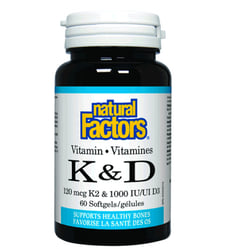
In North America, many of us are diligent in maintaining the health and look of our teeth; our dental hygiene and cosmetic industry is one of the largest in the world, most of which is focused on whiteners, sensitivity diminishment and restructuring or repair. There is a dizzying array of gels, pastes, strips, and adhesives that can either contribute to the health of your teeth, or make them look better. On that note, it is important to keep in mind that health and cosmetic enhancement does not often go hand-in-hand in the dental industry.
But before we get into which products are the best choice for you, let's look at a common disease that affects the health and beauty of our smile and is more common than you think: periodontal disease... a fancy word for tooth decay.
It is important to remember that there are a number of stages of tooth decay. In most cases, it starts with gingivitis and the build up of plaque and tartar. This causes the irritation of gums and can lead to bone loss (periodontitis). If this goes on for a while, it can lead to tooth loss as the bone is no longer supported by the periodontal tissue.
To understand how to support the stopping or prevention of periodontal diseases, we first have to understand what periodontal tissue is comprised of.
 This includes:
This includes:
1) Alveolar bone - a thickened ridge of bone that contains the tooth sockets and the bones that bear teeth -- this is mainly comprised of hydroxyapatite as far as mineral content goes)
2) Cementum - which is a calcified substance that covers the root of the tooth and therefore mainly serves to anchor the tooth by attaching to the periodontal ligaments -- this is a similar composition to bone, but without vascularization. It is approximately 65% hydroxyapatite, 23% collagen Type 1, and 12% water)
3) Gingiva - these are the actual gums which are a mucosal tissue comprised mainly of epithelium and lamina propria). It is important to note that no blood vessels can enter the epitheliam, but nerves are able to (making it avascular)and that the epithelium receives nutrition through diffusion from the underlying connective tissue. The lamina propria is a constituent of the moist linings known as mucous membranes or mucosa, which line various tubes in the body (such as the respiratory tract, the gastrointestinal tract, and the urogenital tract). The lamina propria (more correctly lamina propria mucosæ) is a thin layer of loose connective tissue which lies beneath the epithelium and together with the epithelium constitutes the mucosa. As its Latin name indicates it is a characteristic component of the mucosa, "the mucosa's own special layer". Thus the term mucosa or mucous membrane always refers to the combination of the epithelium plus the lamina propria.
4) Periodontal Ligament- The periodontal ligament, commonly abbreviated as the PDL, is a group of specialized connective tissue fibers that essentially attach a tooth to the alveolar bone within which it sits. These fibers help the tooth withstand the naturally substantial compressive forces which occur during chewing and remain embedded in the bone. In addition to the PDL fibers, there is another set of fibers, known as the gingival fibers, which attach the teeth to their adjacent gingival tissue. Both the gingival fibers, as well as the PDL fibers, are composed primarily of type I collagen.
Knowing that these are the materials we are working with, it is clear that any recommendations for tooth decay must be aimed at stopping tissue and bone degeneration, and decreasing the incidence of gum inflammation as well.
According to the famous dentist Weston A. Price, leftover food is not the whole story for why tooth decay occurs. According to naturalnews.com, after reading and studying the work of Weston Price, late Harvard Professor Earnest Hooten said we need to consider the habits and ways of the Indigenous people, because "It is store food that has given us store teeth."
Time and time again, Dr. Price documented the tragic plight of Indigenous people coming into contact with modern industrialization. Many of these groups enjoyed generation after generation of life without significant tooth decay. But after the arrival of industry and commerce, and with them modern foods, their teeth began to degenerate very rapidly.
Published data from food surveys done by the United States Department of Agriculture show that a significant portion of the population is under nourished. It should not be surprising why.
We eat junk food, processed food, denatured food, and chemically-laden foods. These foods lack the special fat-soluble vitamins which Indigenous people would, at times, go great lengths to obtain.
That means if you want to be healthy, you need to take time and effort to pay attention to what you eat. You cannot just go to the local convenience store and expect that a packaged food product is designed to give you optimal health. It is important to reflect upon the long term consequences of each and every bite of processed and denatured food you eat.
 Through blood tests, Dentist Melvin Page pinpointed the cause of tooth decay in modern people. When our blood chemistry is out of balance, primarily from the consumption of processed foods (especially sugars), the ratio of calcium and phosphorus in our blood deviates from normal. When this happens, minerals are pulled from the bones causing tooth and other bone loss. So, sugar causes tooth decay because it depletes nutrients from the body, not because bacteria eat it and produce acid. In order to restore the ratio of calcium and phosphorus in our blood, and to enable minerals to bond unto our teeth, it is usually not sufficient just to avoid eating too much sweet or processed foods. One must also eat health building foods, containing potent amounts of minerals and vitamins to create a chain reaction that will build glassy hard tooth structure in place of decayed tooth structure.
Through blood tests, Dentist Melvin Page pinpointed the cause of tooth decay in modern people. When our blood chemistry is out of balance, primarily from the consumption of processed foods (especially sugars), the ratio of calcium and phosphorus in our blood deviates from normal. When this happens, minerals are pulled from the bones causing tooth and other bone loss. So, sugar causes tooth decay because it depletes nutrients from the body, not because bacteria eat it and produce acid. In order to restore the ratio of calcium and phosphorus in our blood, and to enable minerals to bond unto our teeth, it is usually not sufficient just to avoid eating too much sweet or processed foods. One must also eat health building foods, containing potent amounts of minerals and vitamins to create a chain reaction that will build glassy hard tooth structure in place of decayed tooth structure.
All of that being said, one of the most important nutrients that can be consumed to help prevent and treat tooth decay is emerging in all of the latest research : Vitamin K2. That overprocessed, denatured food that indigenous people were encountering was not only devoid of regular nutrients, but also devoid of the essential, and largely unknown, Vitamin K2. This vitamin is produced by omnivore animals from the consumption of K1 in grassy foods. As humans, we cannot produce it ourselves, but have to consume it from the organ meats and tissues of those omnivore animals such as cattle, chicken and so forth. With the industrialization of the food system and the advent of feeding animals GRAINS instead of GRASSES, this vitamin was lost in our modern diet. But it took FOREVER to figure that out, and even longer to finally get this information in the public eye.
In 1945, Dr. Price described "a new vitamin-like activator" that played an influential role in the utilization of minerals, protection from tooth decay, growth and development, reproduction, protection against heart disease and the function of the brain.
Using a chemical test, he determined that this compound—which he called Activator X—occurred in the butterfat, organs and fat of animals consuming rapidly growing green grass, and also in certain sea foods such as fish eggs.
Dr. Price died before research by Russian scientists became known in the West. These scientists used the same chemical test to measure a compound similar to vitamin K.
 Vitamin K2 is produced by animal tissues, including the mammary glands, from vitamin K1, which occurs in rapidly growing green plants.
Vitamin K2 is produced by animal tissues, including the mammary glands, from vitamin K1, which occurs in rapidly growing green plants.
A growing body of published research confirms Dr. Price's discoveries, namely that vitamin K2 is important for the utilization of minerals, protects against tooth decay, supports growth and development, is involved in normal reproduction, protects against calcification of the arteries leading to heart disease, and is a major component of the brain.
Vitamin K2 works synergistically with the two other "fat-soluble activators" that Price studied, vitamins A and D. Vitamins A and D signal to the cells to produce certain proteins and vitamin K then activates these proteins.
Vitamin K2 plays a crucial role in the development of the facial bones, and its presence in the diets of nonindustrialized peoples explains the wide facial structure and freedom from dental deformities that Weston Price observed.
After Vitamin K2, minerals and fat-soluble vitamins, and in the event that tooth decay has already settled in, the use of Coenzyme Q10 has been clinically proven to reverse gum damage and protect the connective tissue. Alpha Lipoic Acid can help protect exposed nerves and decrease sensitivity, while Vitamin C in higher daily doses exerts an anti-oxidant protective capacity. In the event of serious gum loss, Vitamin C should also be accompanied by daily doses of Collagen Type I and III.
For cavities, the traditional home remedies are dabbing the hole with clove essential oil (DO NOT INGEST) and swishing several times per day with oil of oregano.
In health,
Nakita

Disclaimer: The above information is provided for informational purposes only and is not intended to replace the advice of your physician.



